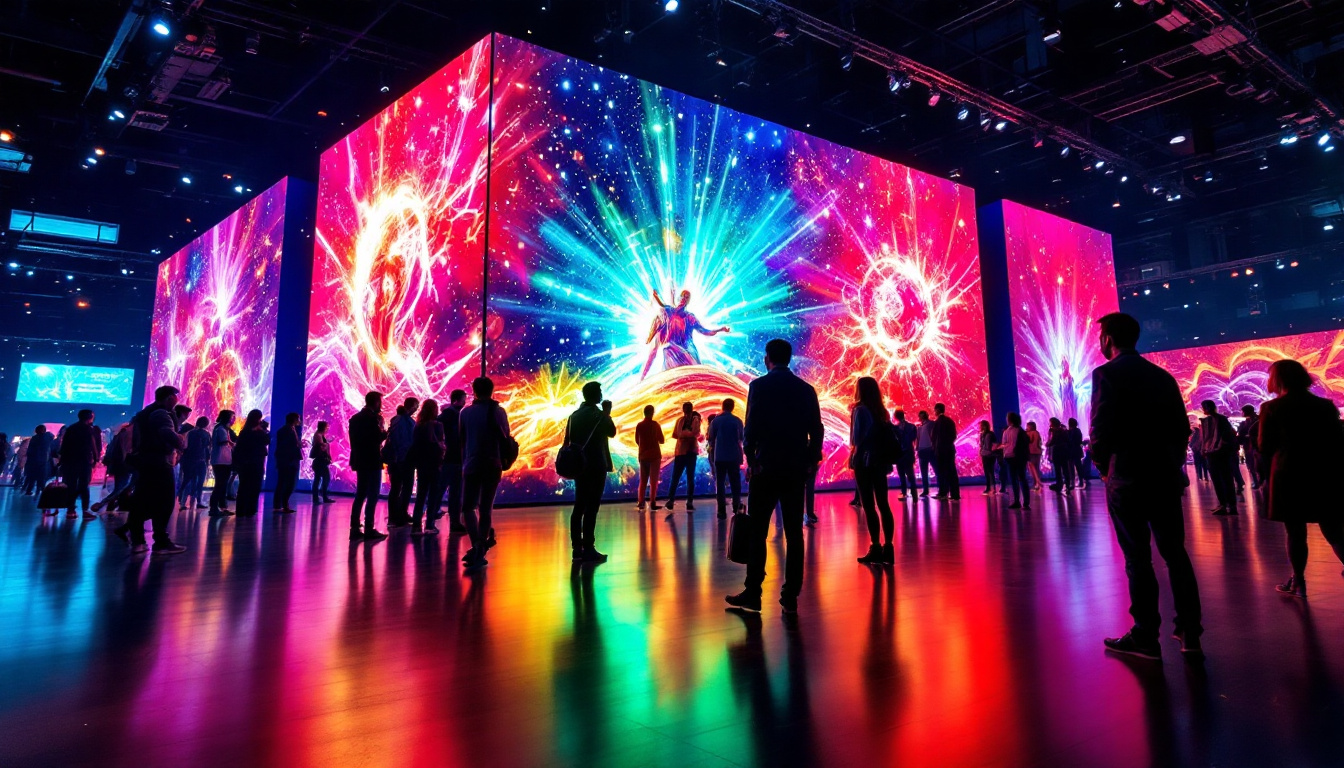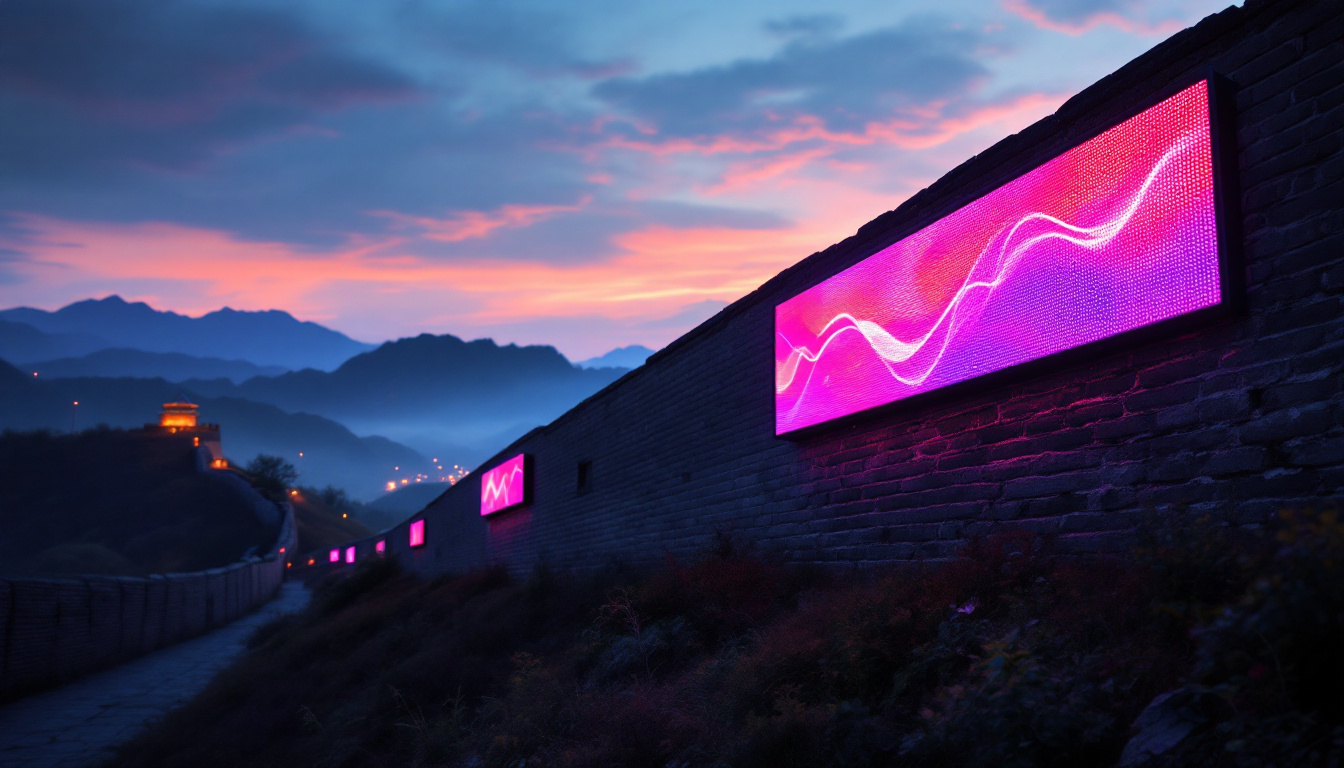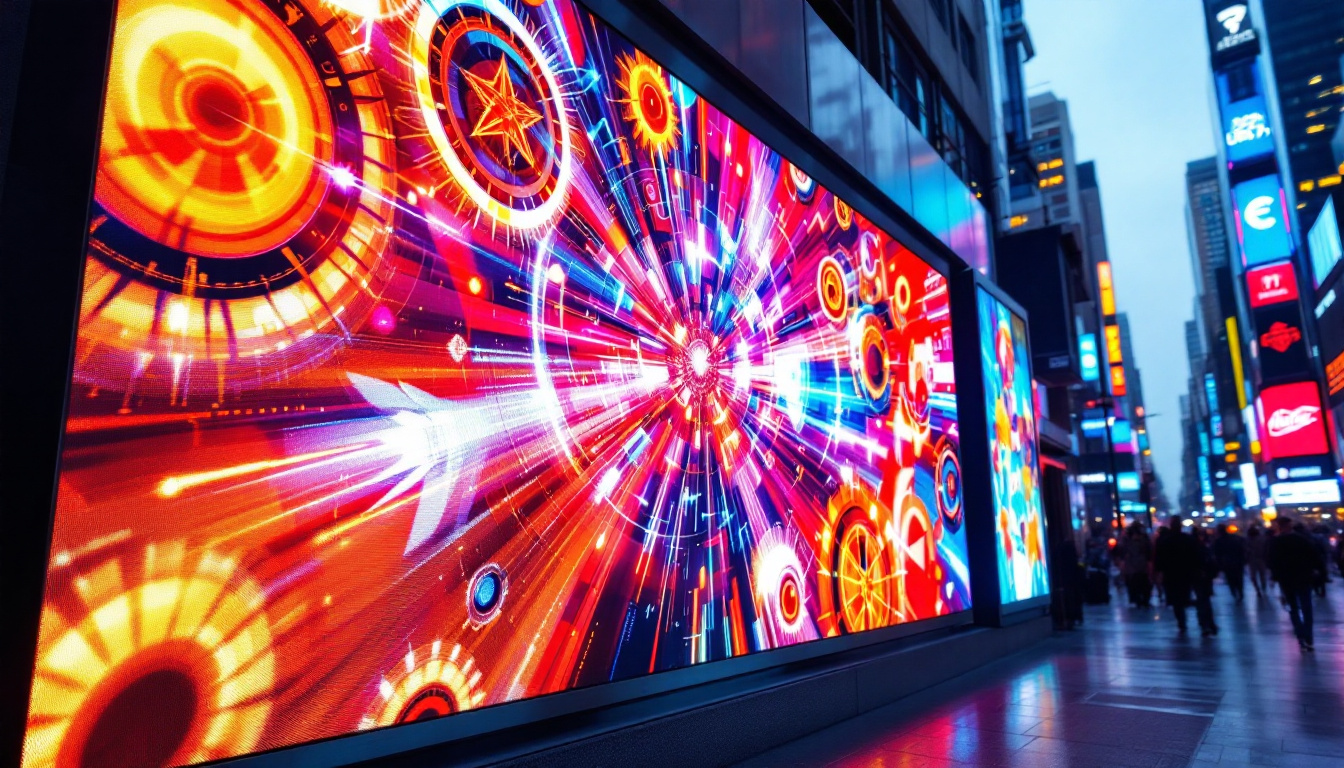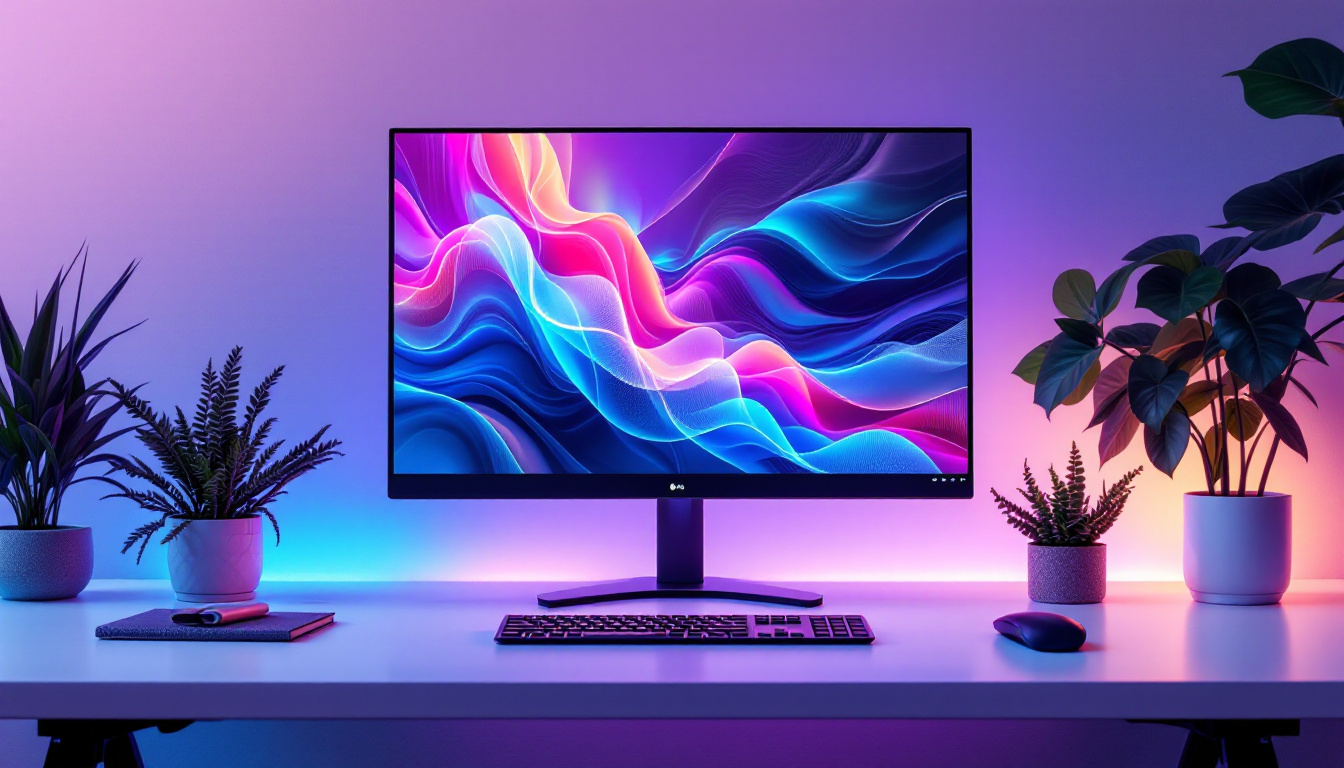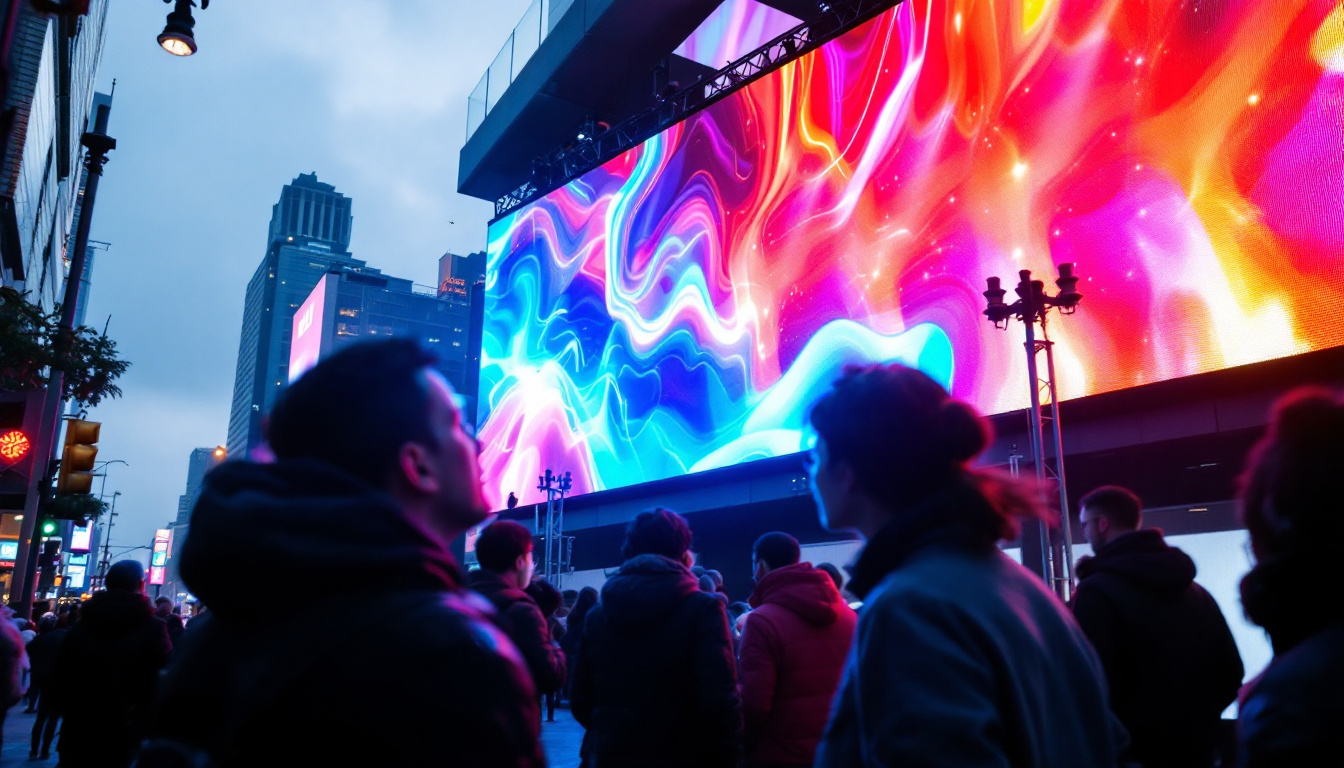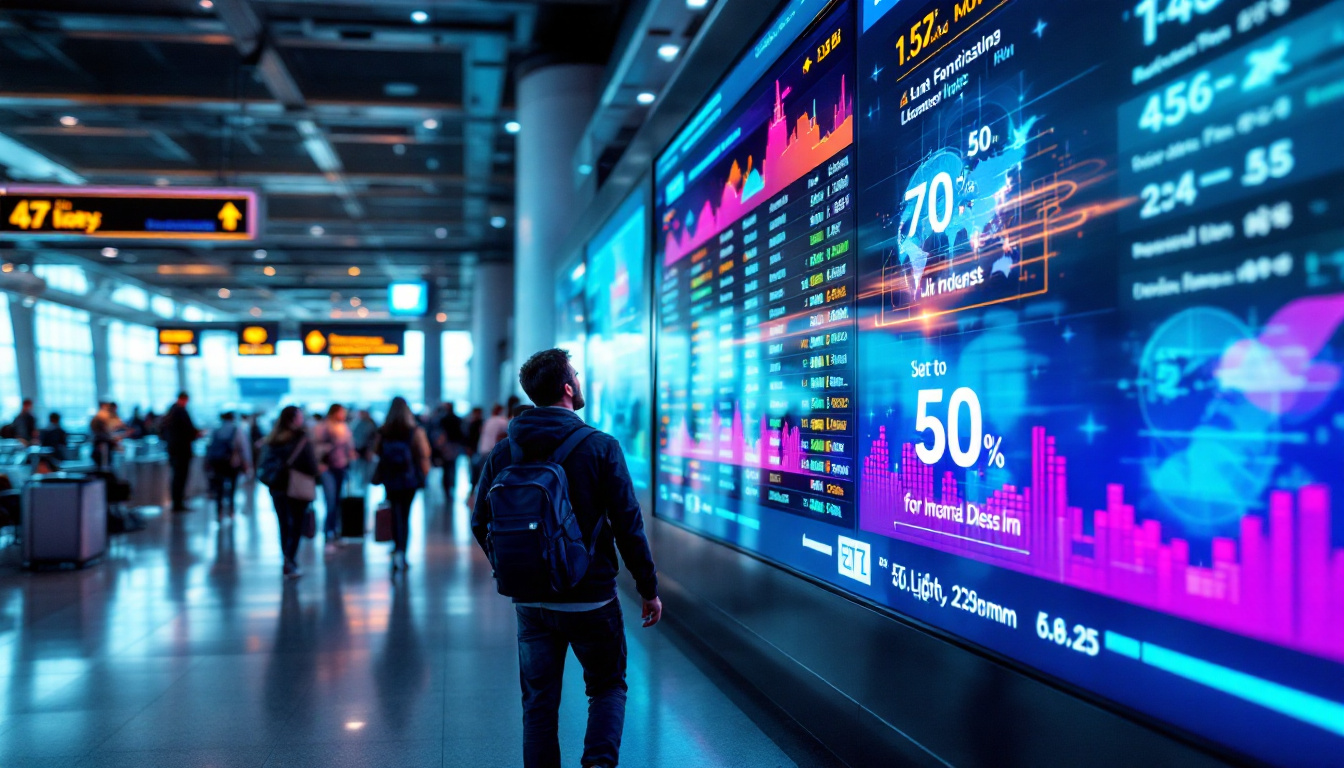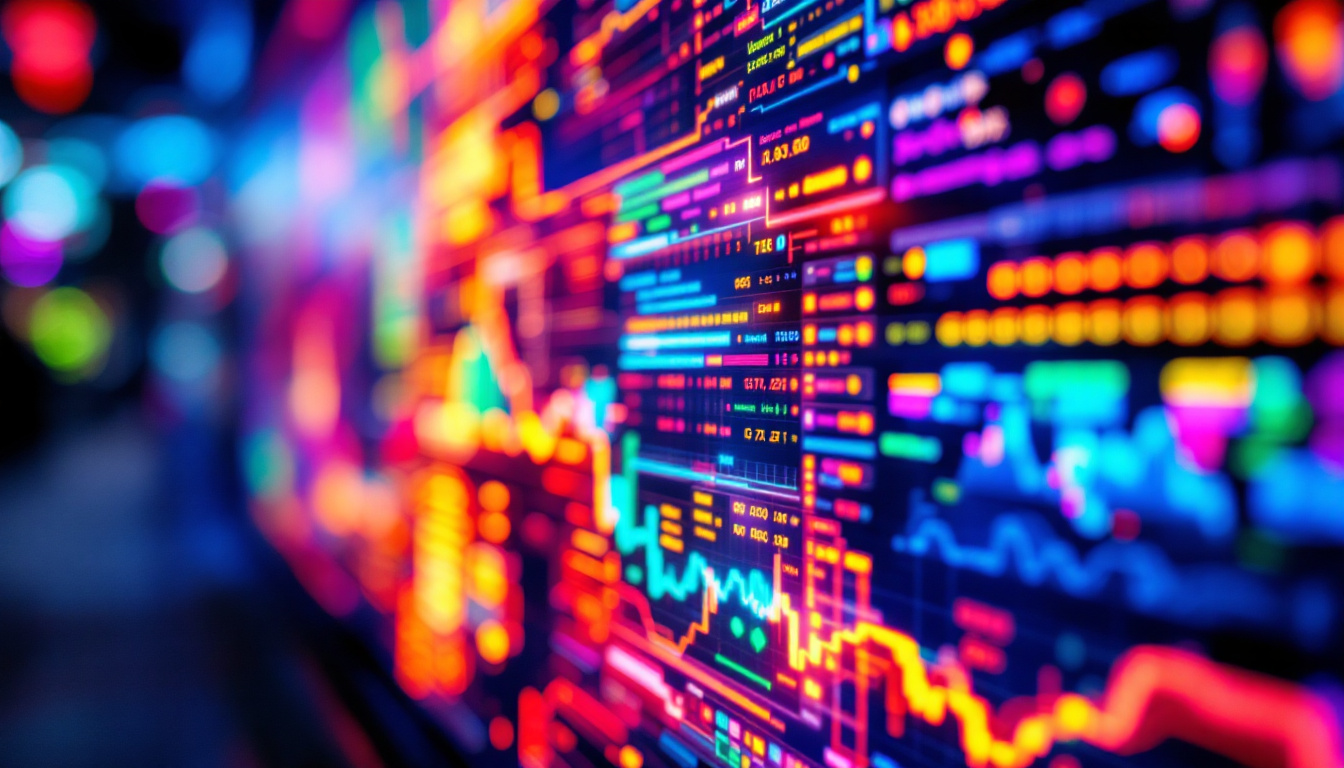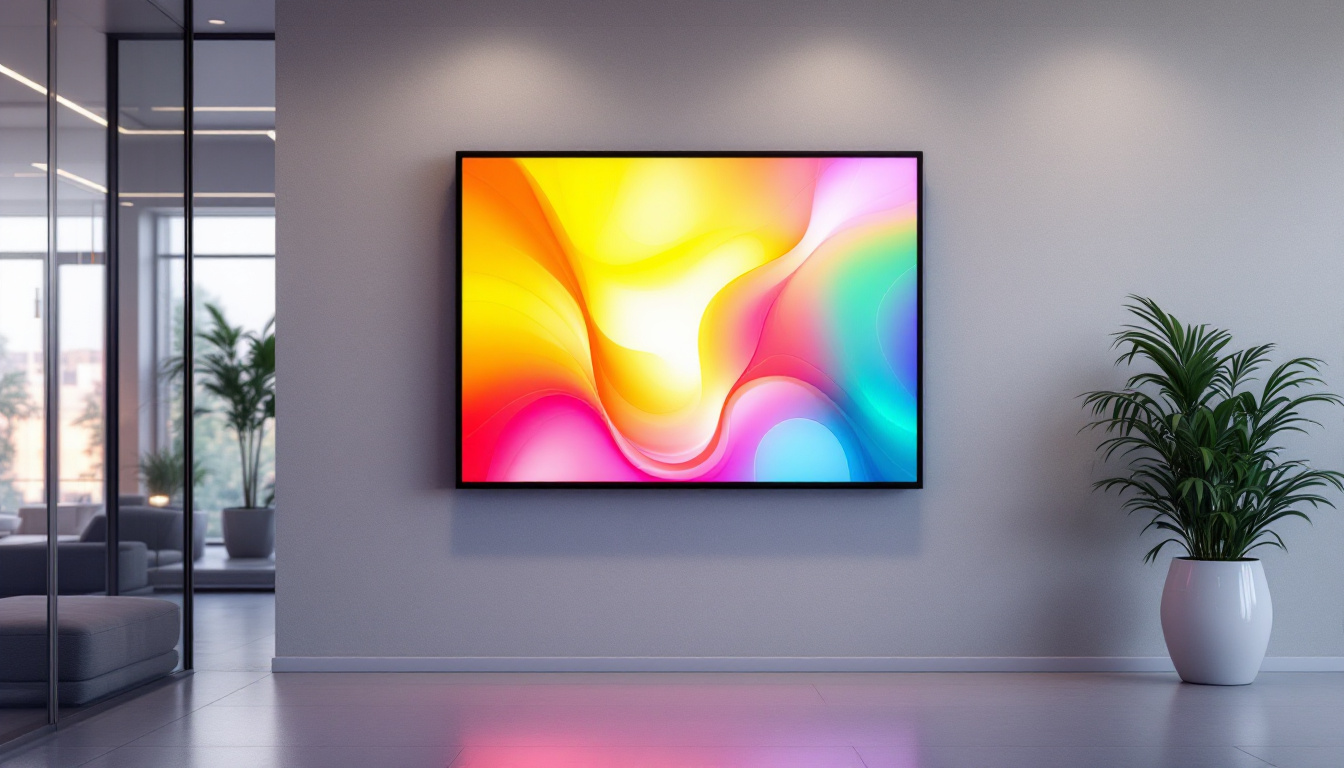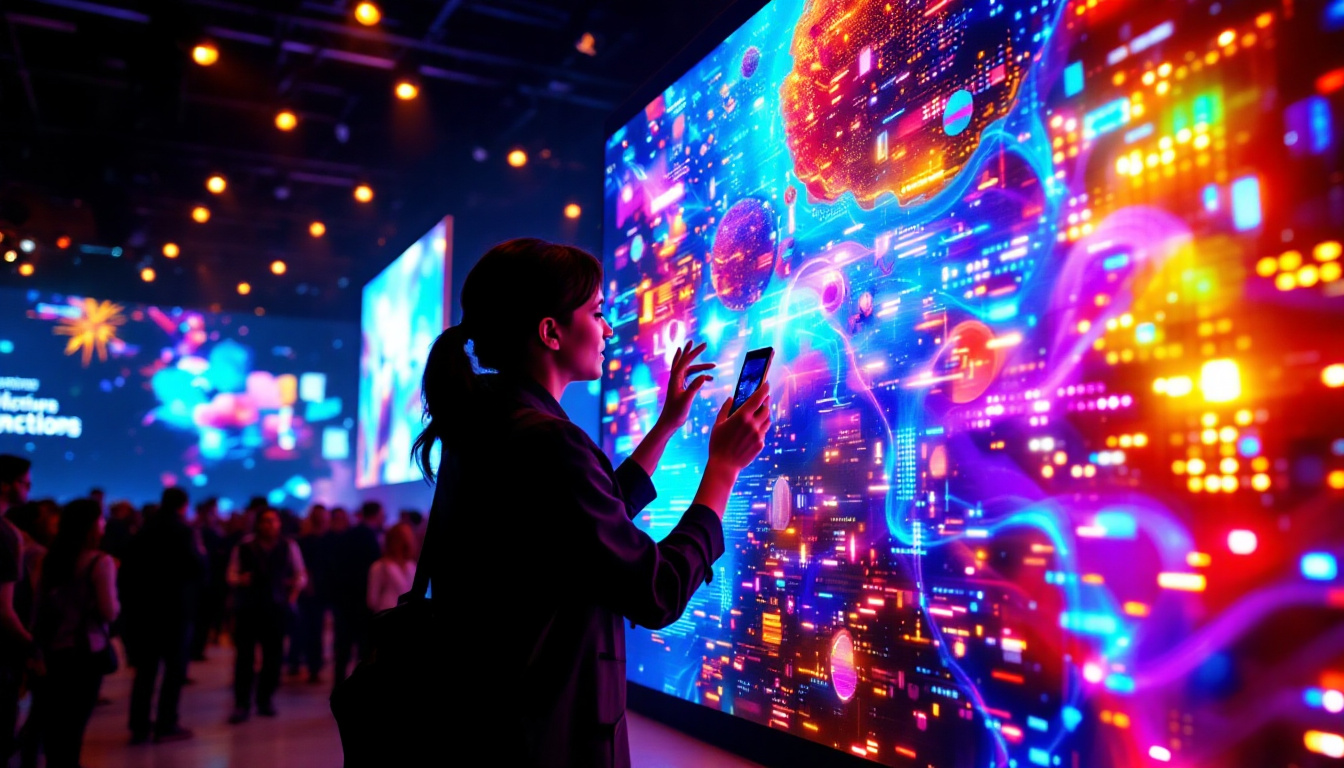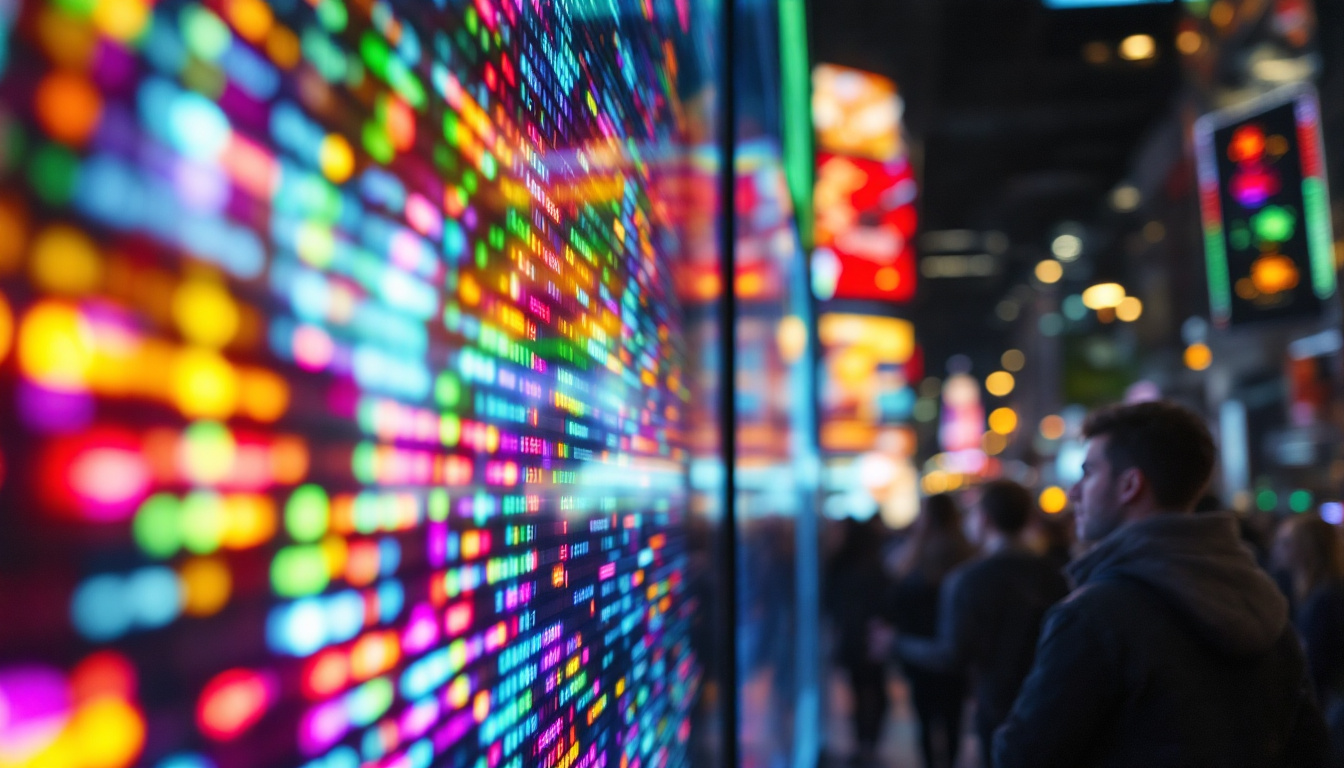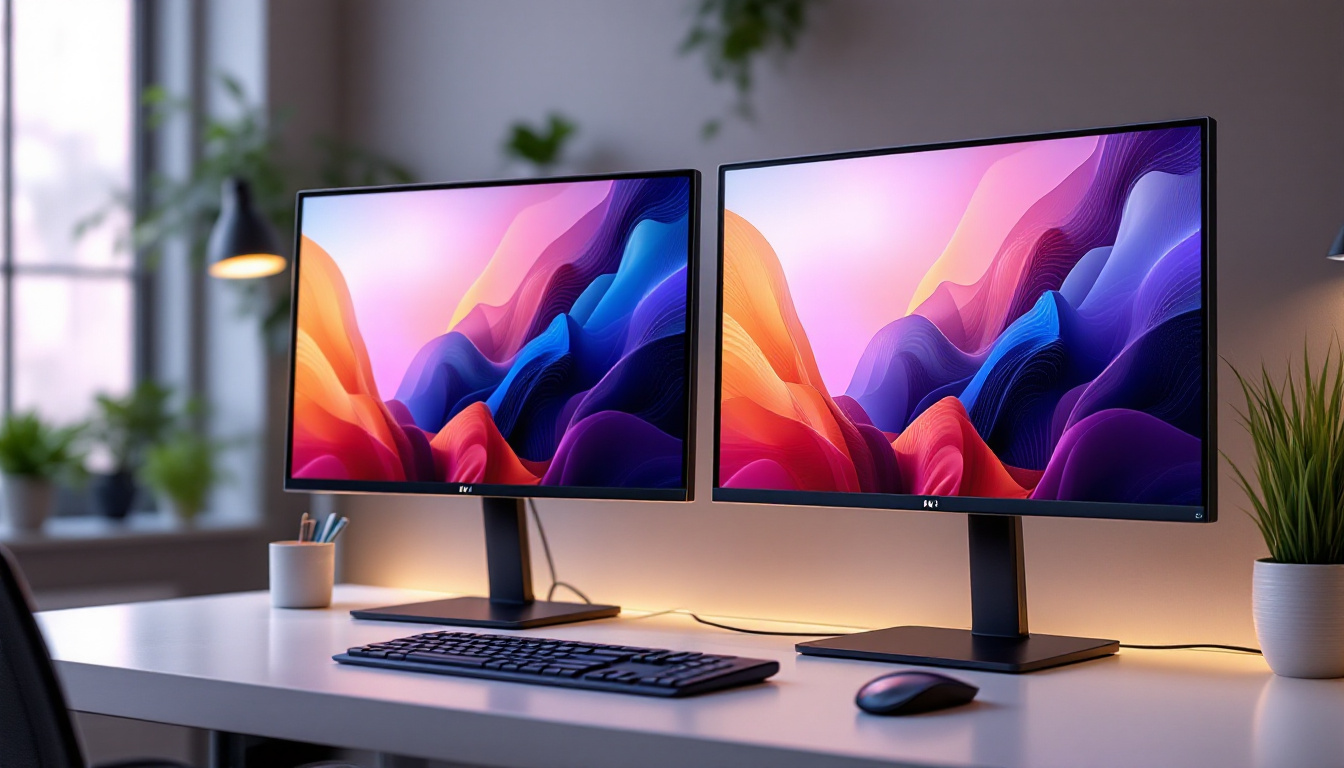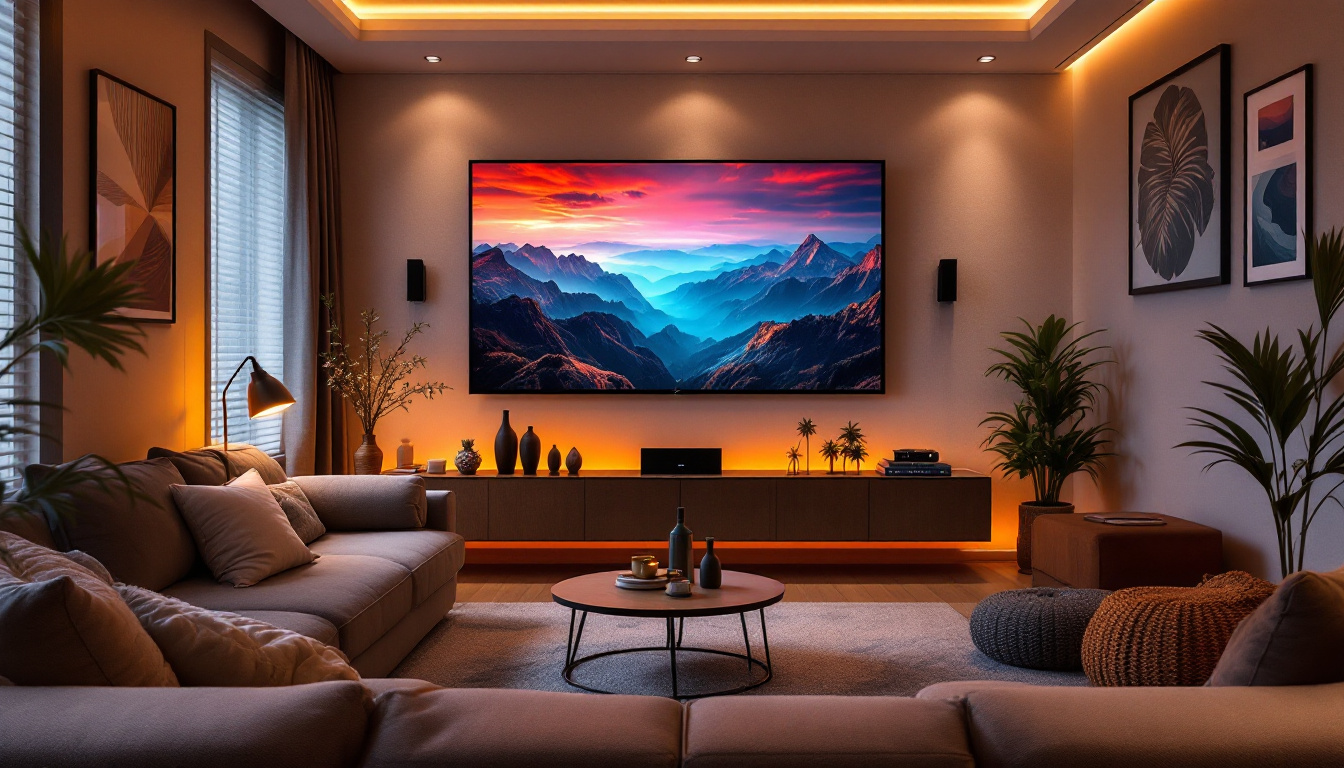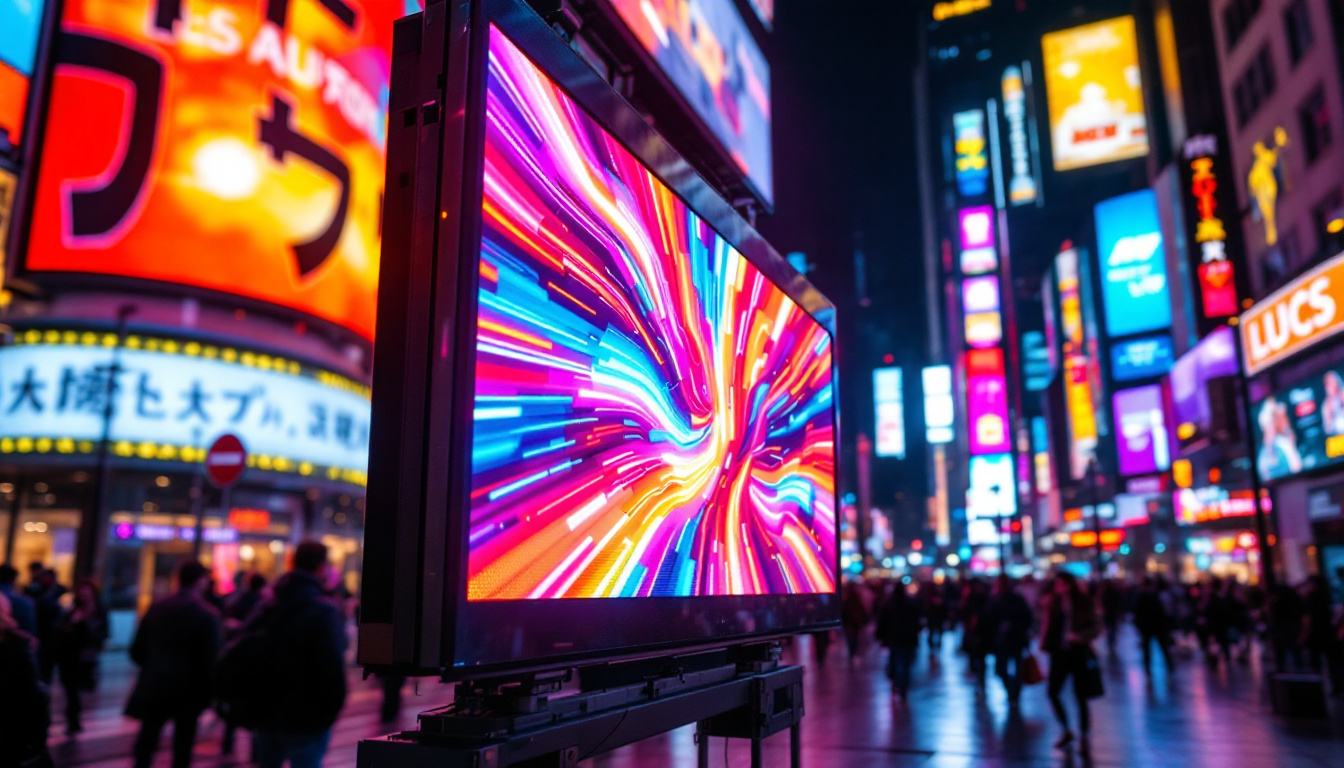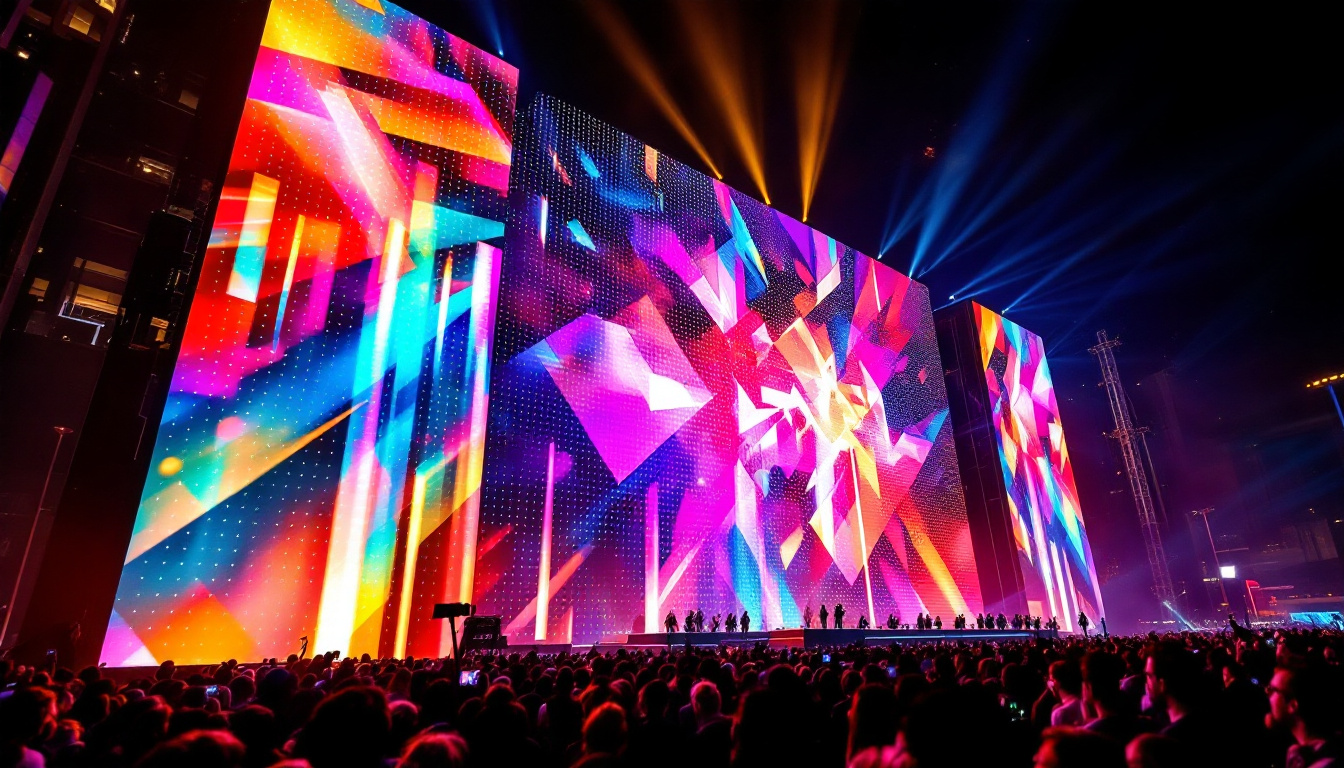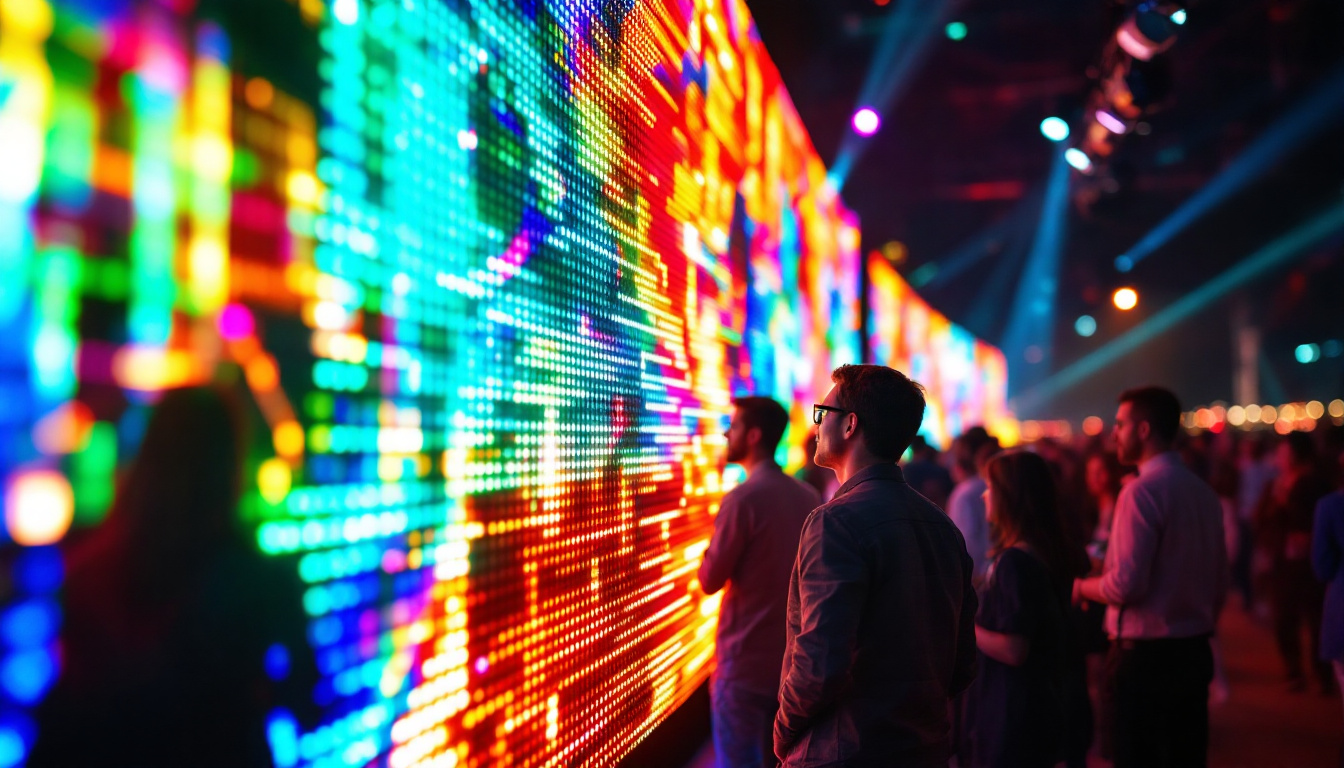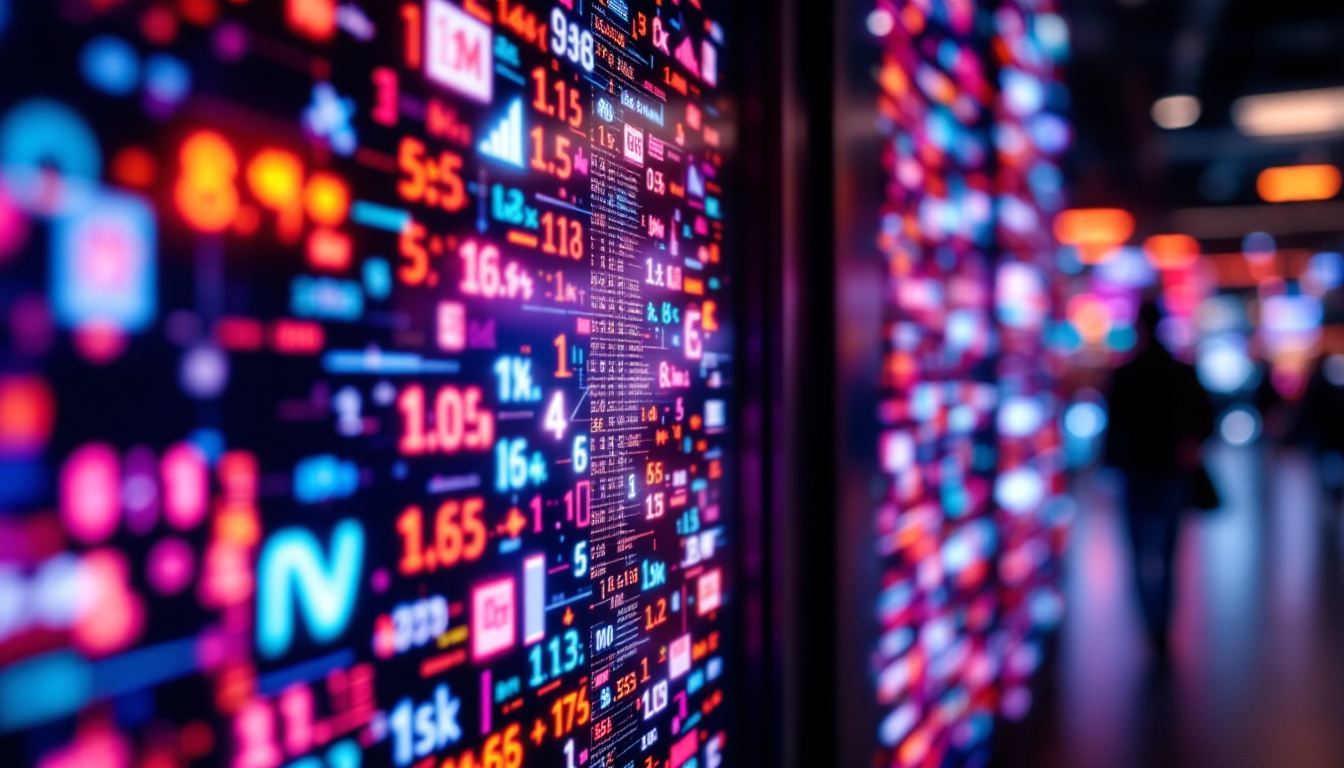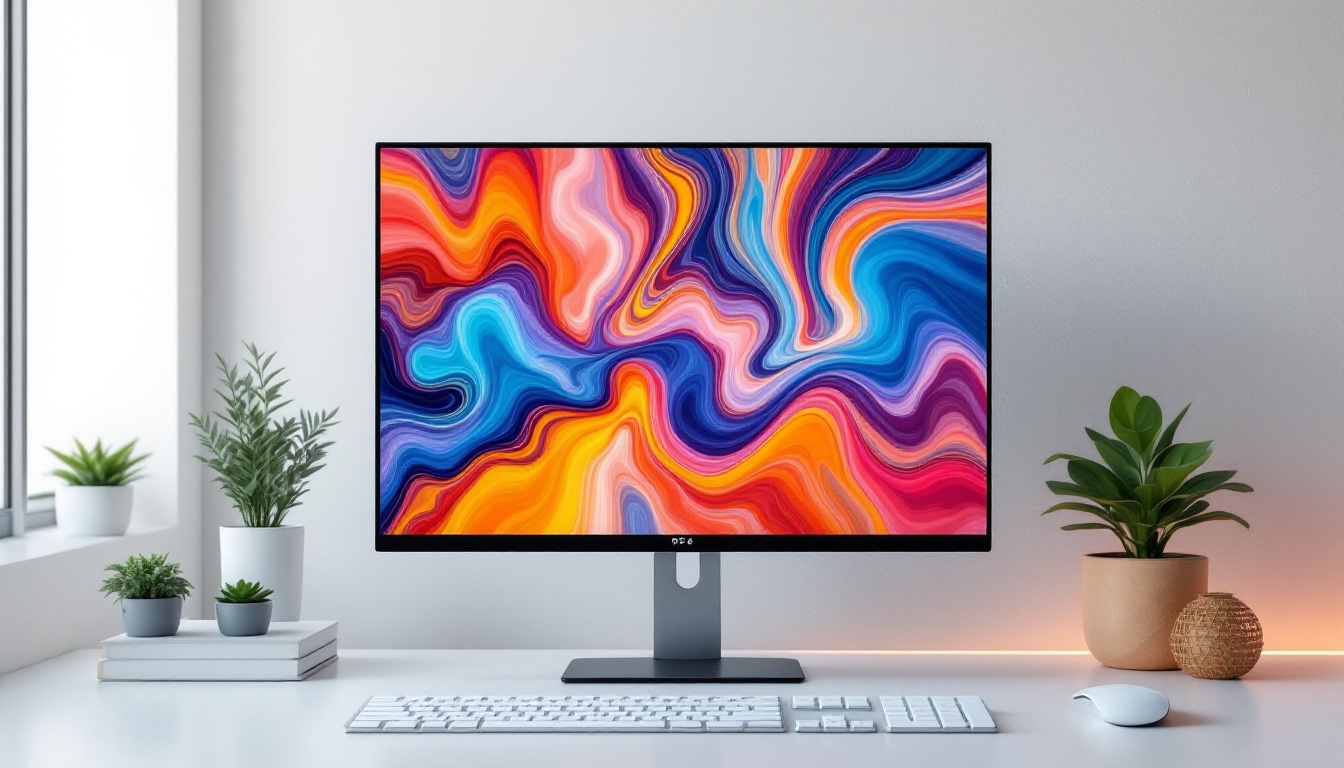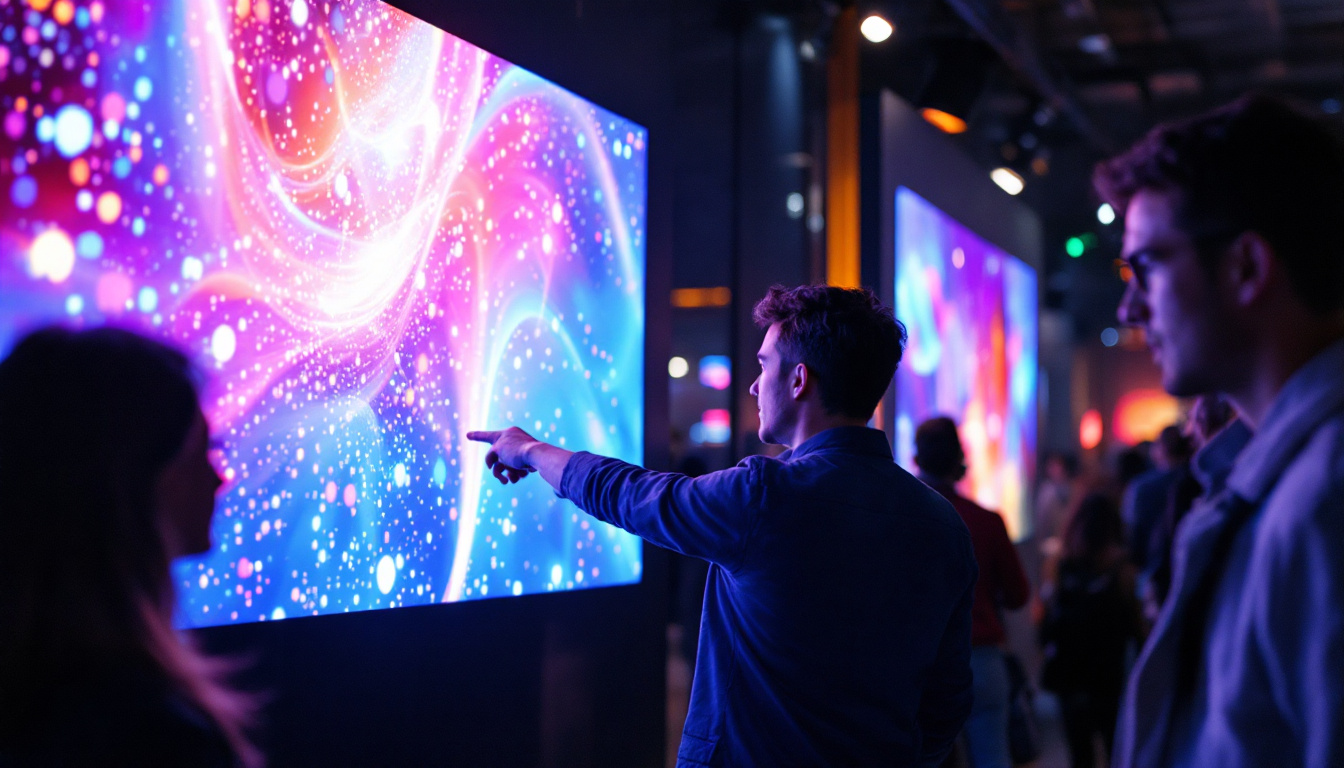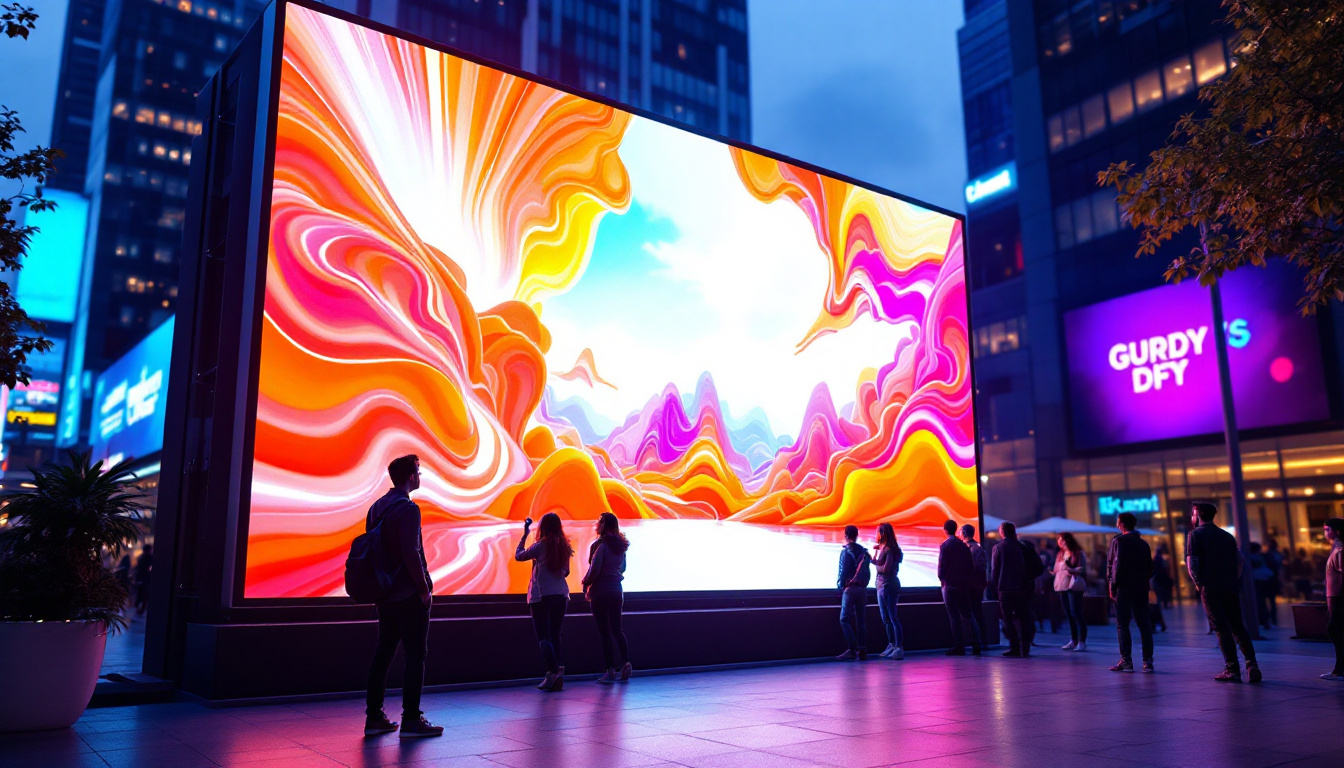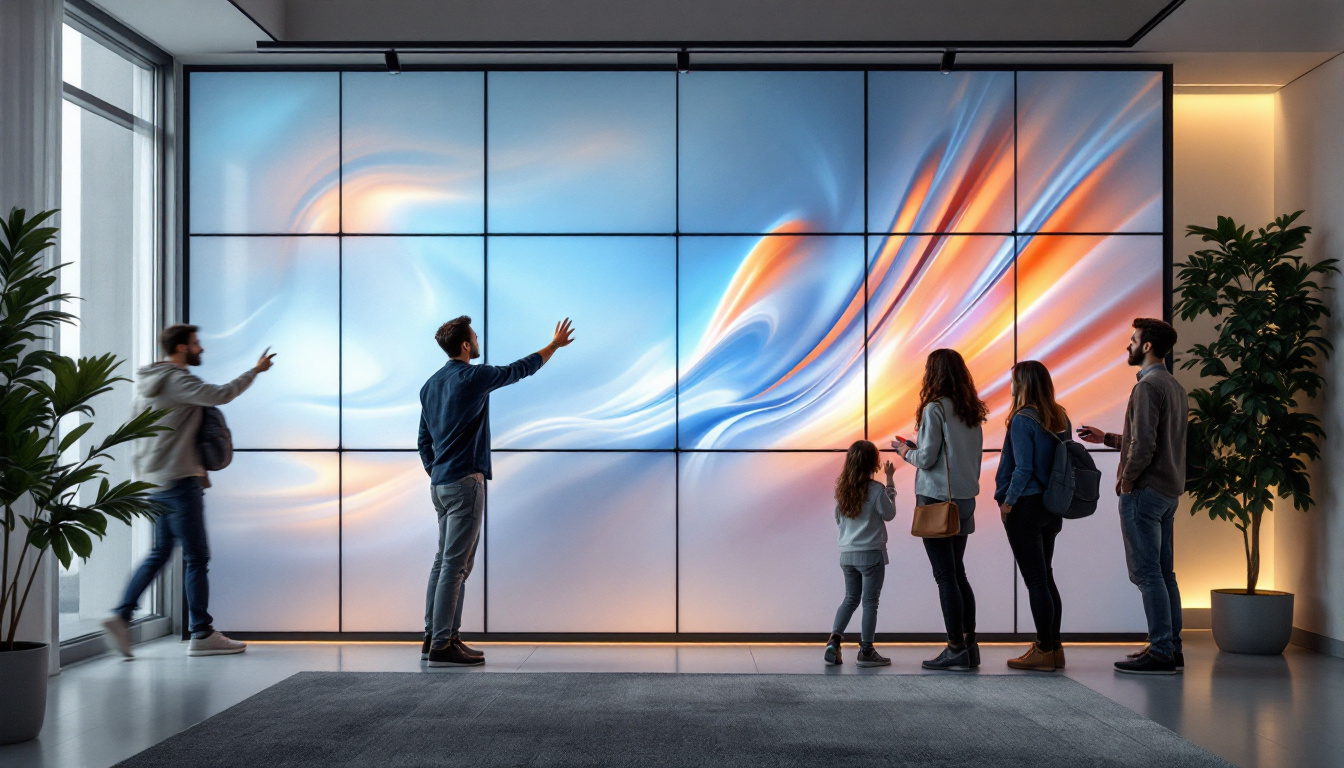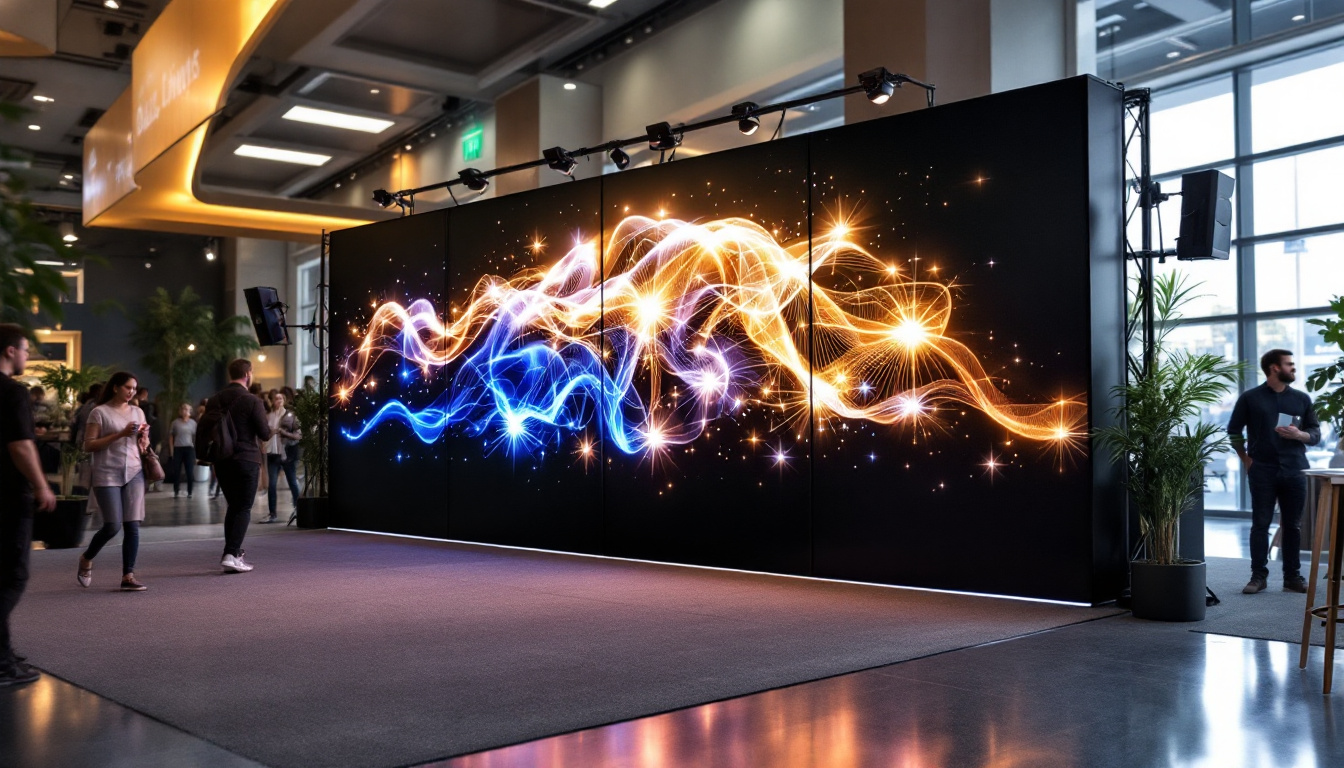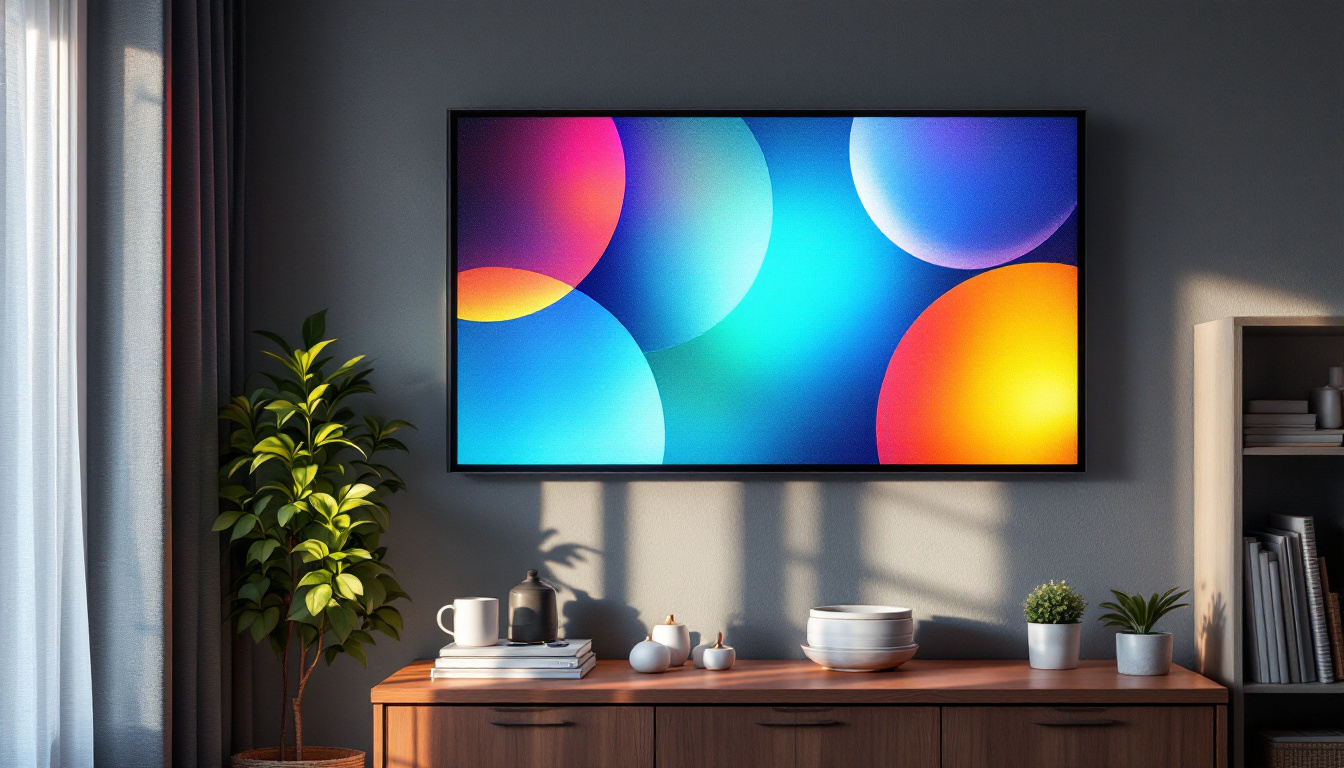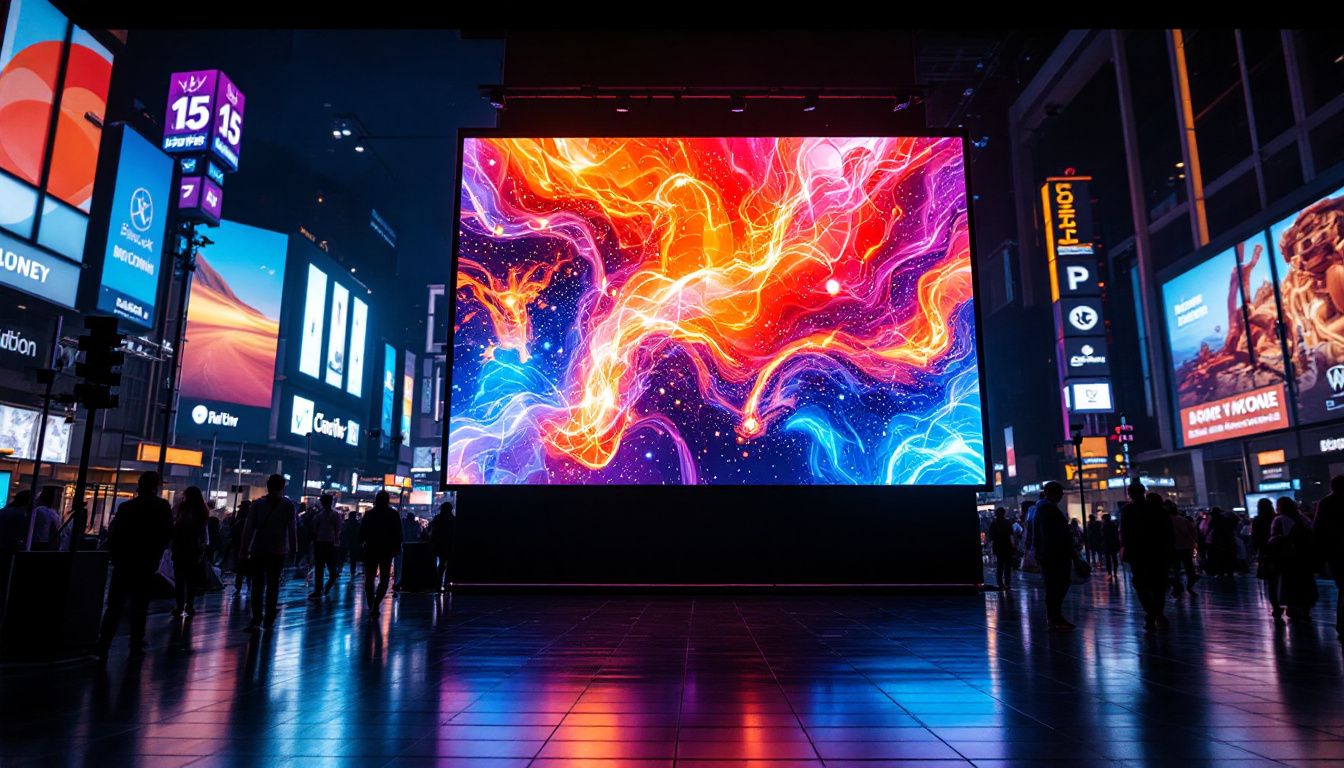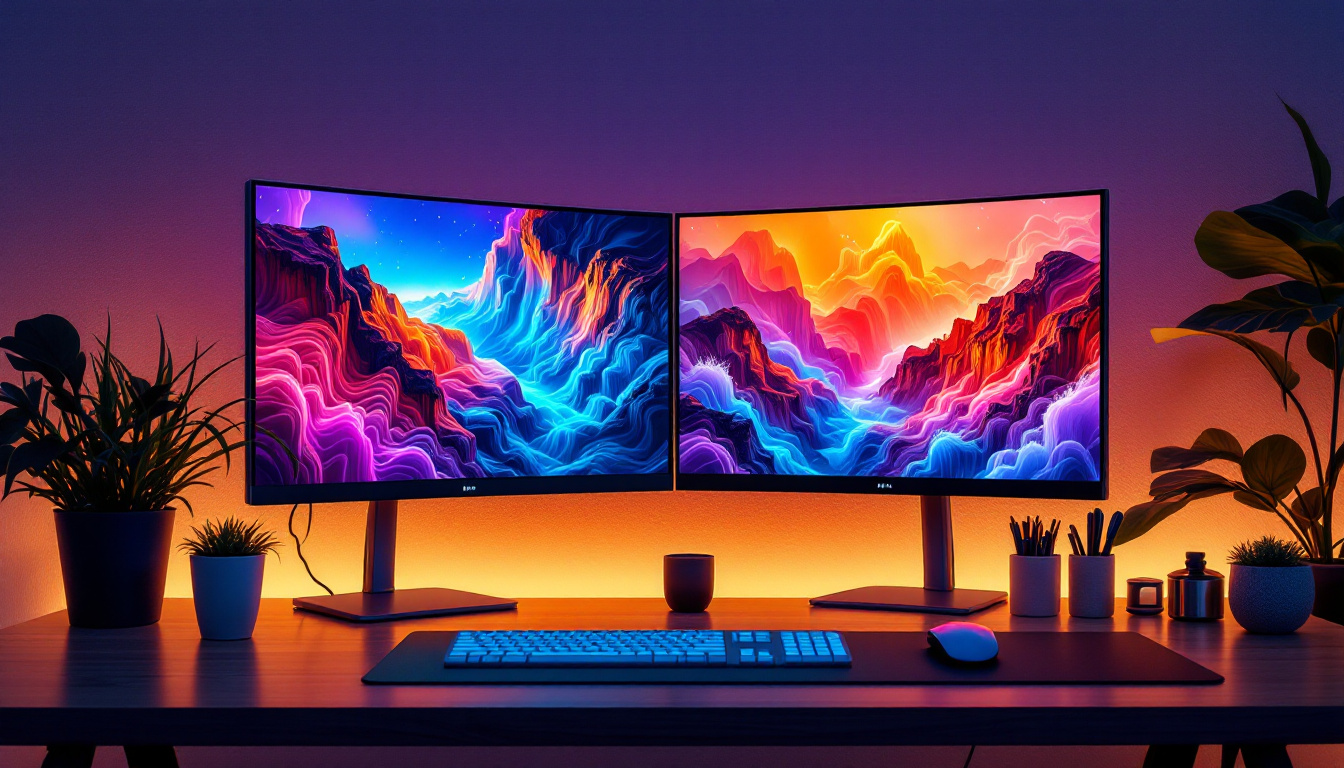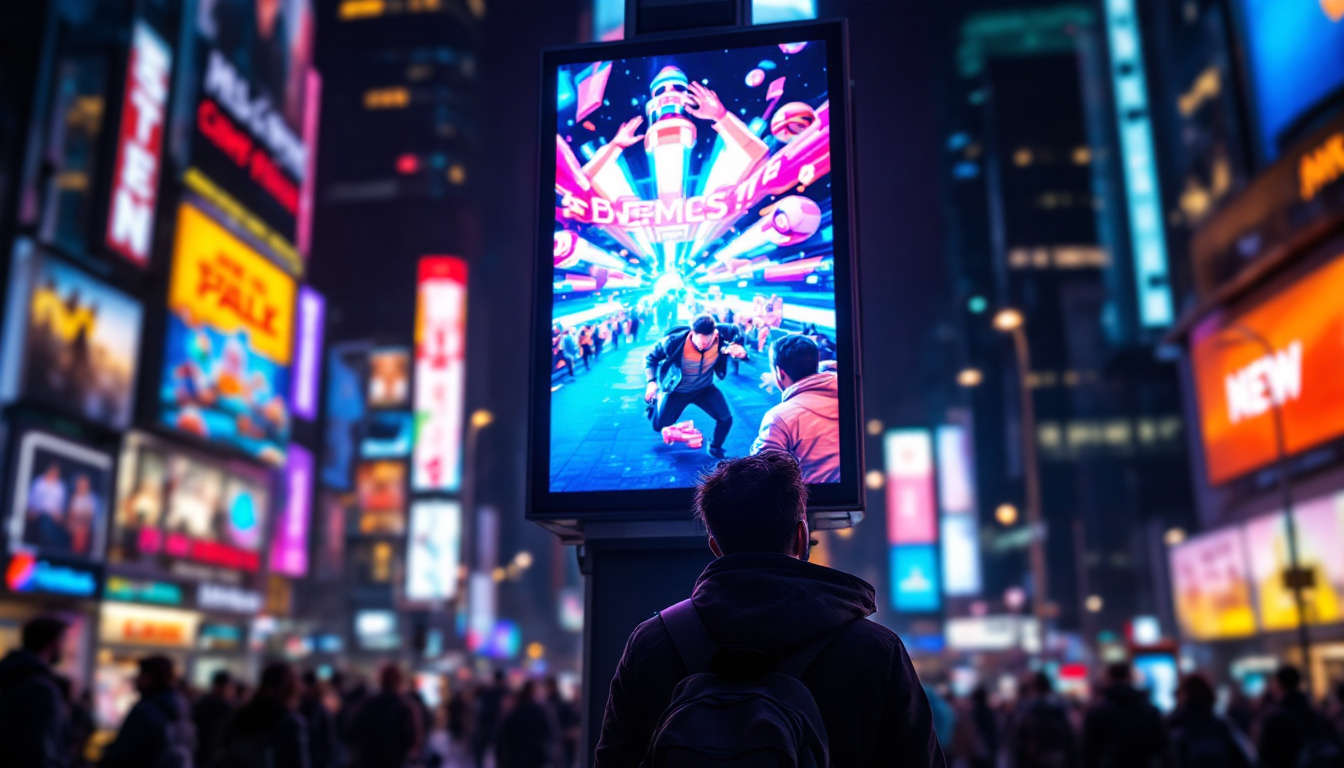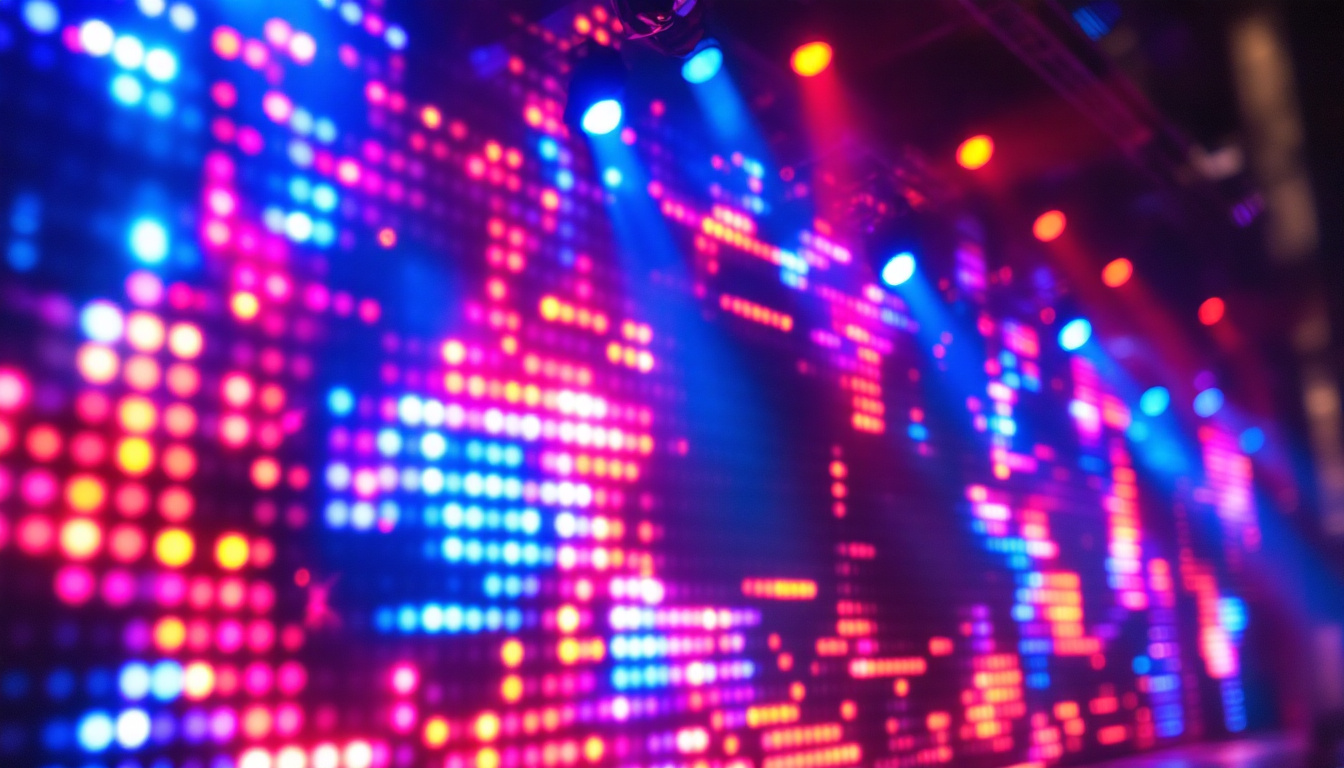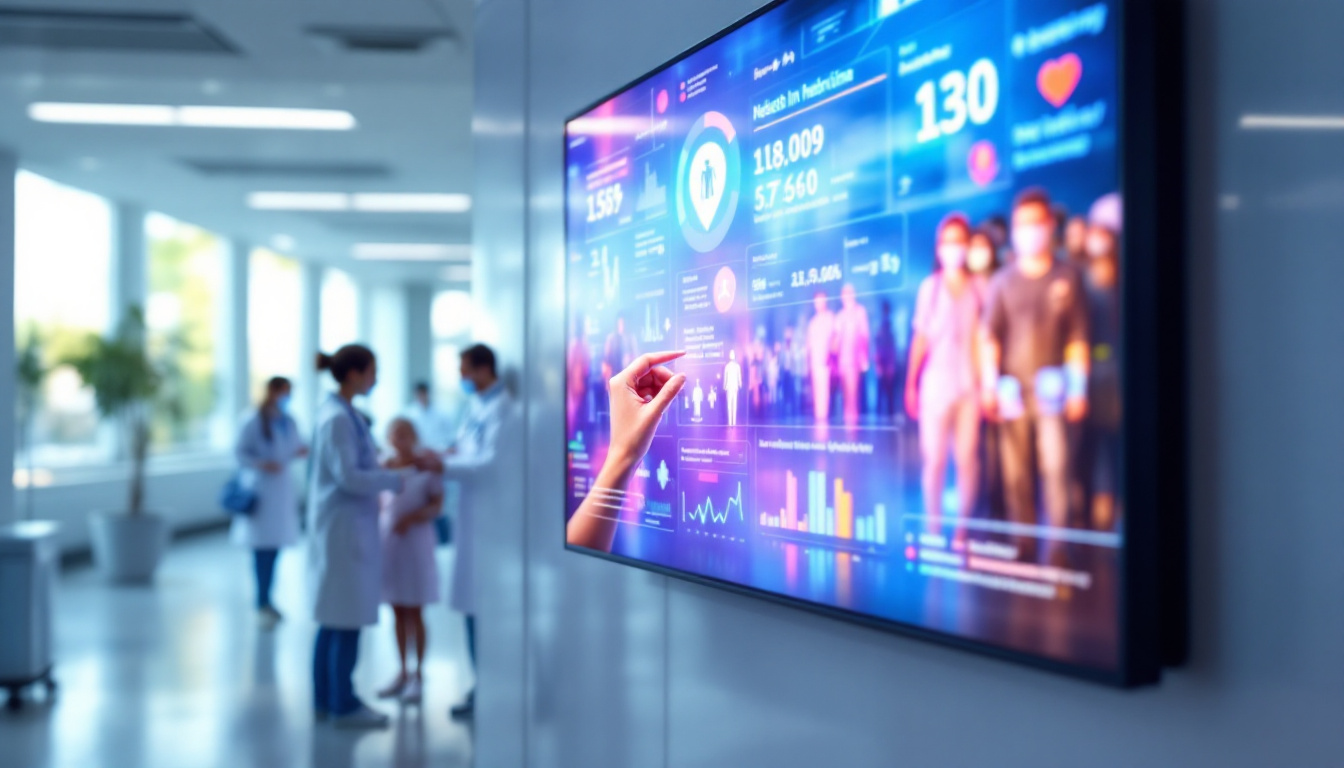In today’s digital landscape, LED displays have become an integral part of the media and entertainment industry. Pro Media TV, a leader in broadcasting technology, utilizes advanced LED display technology to enhance viewer engagement and deliver high-quality visual experiences. This article delves into the intricacies of LED displays, their applications, advantages, and the future of this dynamic technology.
Understanding LED Display Technology
LED, or Light Emitting Diode, displays are a type of flat panel display that uses LEDs as a light source. Unlike traditional LCD displays that rely on fluorescent backlighting, LED displays offer superior brightness, contrast, and energy efficiency. This technology has revolutionized how content is presented, making it a preferred choice for various applications, from television broadcasting to advertising and public displays. The advancements in LED technology have also led to the development of more compact and lightweight displays, which are easier to install and transport, further enhancing their versatility in different environments.
How LED Displays Work
At the core of LED display technology is the use of semiconductor materials that emit light when an electric current passes through them. These diodes are arranged in a matrix format, allowing for the creation of vibrant images and videos. Each pixel in an LED display consists of red, green, and blue (RGB) sub-pixels, which combine to produce a wide spectrum of colors. This RGB configuration enables LED displays to achieve remarkable color accuracy and brightness. Moreover, the rapid response time of LEDs allows for smooth transitions and high frame rates, making them particularly effective for displaying fast-moving content such as sports or action films.
Additionally, LED displays can be classified into two main types: direct view and backlit. Direct view LED displays utilize individual LEDs to form the image, while backlit LED displays use LEDs to illuminate an LCD panel. The former is commonly used in large outdoor screens, while the latter is typically found in televisions and computer monitors. The evolution of these technologies has also led to the emergence of features such as local dimming in backlit displays, which enhances contrast by adjusting the brightness of different screen areas independently, thus improving the overall viewing experience.
Types of LED Displays
LED displays come in various forms, each tailored for specific applications. The most common types include:
- Indoor LED Displays: These are designed for use in controlled environments, such as shopping malls, conference rooms, and theaters. They offer high resolution and are capable of displaying detailed images and videos. Indoor displays often incorporate advanced features such as touch sensitivity, enabling interactive experiences that engage audiences in a more dynamic way.
- Outdoor LED Displays: Built to withstand harsh weather conditions, outdoor LED displays are used for billboards, sports arenas, and public events. They are brighter than their indoor counterparts to ensure visibility in direct sunlight. Additionally, outdoor displays often feature protective coatings and robust construction to resist moisture, dust, and temperature fluctuations, ensuring longevity and reliability in various climates.
- Transparent LED Displays: This innovative technology allows for the display of images and videos while maintaining transparency, making them ideal for retail environments and architectural applications. Transparent LED displays can be seamlessly integrated into glass structures, providing an eye-catching way to showcase advertisements or artistic content without obstructing the view, thereby enhancing the aesthetic appeal of the surrounding space.
Applications of LED Displays
LED displays are versatile and find applications across various sectors. Their ability to deliver high-quality visuals makes them a popular choice in numerous fields.
Broadcasting and Media
In the broadcasting industry, LED displays are essential for delivering engaging content. Pro Media TV utilizes LED technology to create dynamic backdrops for news studios and entertainment shows. The vibrant colors and high resolution enhance the viewing experience, making broadcasts more appealing to audiences.
Moreover, LED displays are used for live event coverage, providing real-time information and visuals to viewers at home. This technology allows broadcasters to create immersive experiences that captivate audiences and keep them informed. With the integration of advanced graphics and animations, LED displays can also highlight key statistics, breaking news, and social media feeds, making the viewing experience not just informative but also interactive.
Advertising and Marketing
One of the most significant applications of LED displays is in advertising. Businesses leverage LED technology to create eye-catching advertisements that attract consumers’ attention. Outdoor LED billboards, for instance, can display dynamic content that changes throughout the day, maximizing engagement and reach.
Additionally, indoor LED displays are used in retail environments to promote products and sales. The ability to display high-resolution images and videos allows retailers to showcase their offerings effectively, driving foot traffic and increasing sales. Interactive LED displays are also becoming popular, allowing customers to engage with the content directly, such as by browsing product catalogs or participating in promotional games, thus enhancing customer interaction and satisfaction.
Sports and Entertainment
In the sports industry, LED displays play a crucial role in enhancing the spectator experience. Stadiums and arenas utilize large LED screens to display live game footage, replays, and advertisements. These displays ensure that fans have a clear view of the action, regardless of their seating position.
Furthermore, LED technology is also employed in concerts and events, where large screens are used to project visuals that complement performances. This integration of technology and entertainment creates a more immersive experience for audiences. Beyond just visuals, LED displays can also be synchronized with sound systems to create a cohesive audio-visual experience, enhancing the emotional impact of performances. Additionally, the flexibility of LED technology allows for creative staging, where screens can be shaped and configured in various ways to fit the artistic vision of the event, making each show unique and memorable.
Advantages of LED Displays
The growing popularity of LED displays can be attributed to their numerous advantages over traditional display technologies. Understanding these benefits helps organizations make informed decisions about their display needs.
Energy Efficiency
LED displays are known for their energy efficiency. They consume significantly less power compared to traditional displays, which translates to lower operational costs. This energy efficiency is particularly beneficial for businesses that operate large displays or require them to run for extended periods. Furthermore, many LED displays come with smart technology that allows for adaptive brightness control, adjusting the light output based on ambient lighting conditions. This not only conserves energy but also enhances the viewer’s experience by providing optimal visibility at all times.
Longevity and Durability
Another advantage of LED displays is their longevity. LED technology has a lifespan of up to 100,000 hours, making them a cost-effective investment for businesses. Additionally, they are more durable than traditional displays, as they are less prone to damage from impacts and harsh weather conditions. This durability is especially important for outdoor installations, where displays are exposed to elements such as rain, snow, and extreme temperatures. The robust construction of LED displays often includes weatherproof casings and protective coatings, ensuring that they can withstand the rigors of outdoor use while maintaining optimal performance.
High Brightness and Contrast
LED displays offer superior brightness and contrast ratios, ensuring that content remains visible even in bright environments. This capability makes them ideal for outdoor applications where sunlight can hinder visibility. The enhanced contrast also contributes to a more vibrant and engaging viewing experience. Moreover, LED technology allows for a wider color gamut, enabling displays to reproduce more colors than traditional LCDs. This not only makes images and videos more lifelike but also enhances the overall aesthetic appeal of the content being displayed. As a result, businesses can leverage these features to create captivating advertisements and presentations that capture the attention of their audience effectively.
The Future of LED Display Technology
As technology continues to evolve, LED displays are expected to undergo significant advancements. Innovations in design, functionality, and interactivity are on the horizon, promising to enhance the way content is delivered and experienced.
Advancements in Resolution
One of the most exciting developments in LED technology is the push towards higher resolutions. As consumer demand for sharper images increases, manufacturers are focusing on creating displays with higher pixel densities. This trend is evident in the rise of 4K and even 8K LED displays, which offer unparalleled clarity and detail.
Integration with Smart Technology
The integration of LED displays with smart technology is another area of growth. As the Internet of Things (IoT) continues to expand, LED displays can be connected to smart systems, allowing for real-time data integration and interactivity. This capability opens up new possibilities for advertising, event management, and audience engagement.
Sustainability Initiatives
As environmental concerns become increasingly important, the LED display industry is also focusing on sustainability. Manufacturers are exploring eco-friendly materials and production processes to reduce the environmental impact of LED displays. This shift towards sustainability will likely influence consumer preferences and drive innovation in the sector.
Conclusion
LED display technology has transformed the way content is presented and consumed across various industries. With its numerous advantages, including energy efficiency, durability, and high-quality visuals, LED displays have become a staple in broadcasting, advertising, sports, and entertainment.
As Pro Media TV continues to leverage this technology, the future promises exciting advancements that will further enhance viewer experiences. From higher resolutions to smart integrations and sustainability initiatives, the evolution of LED displays is set to shape the media landscape for years to come.
In conclusion, understanding the intricacies of LED display technology is essential for businesses looking to stay competitive in today’s fast-paced digital world. By embracing this innovative technology, organizations can create engaging experiences that resonate with their audiences and drive success.
Discover LumenMatrix’s Innovative LED Solutions
Ready to elevate your visual communication and captivate your audience with the latest in LED technology? Explore LumenMatrix’s comprehensive range of LED display solutions, from vibrant Indoor and Outdoor LED Walls to dynamic Vehicle and Sports Displays. Whether you’re looking to create an immersive experience with a Floor LED Display, make a bold statement with a Custom LED Display, or streamline your message with an All-in-One LED solution, LumenMatrix is your partner in revolutionizing your brand’s presence. Check out LumenMatrix LED Display Solutions today and see how we can help you share your message with impact and clarity.

